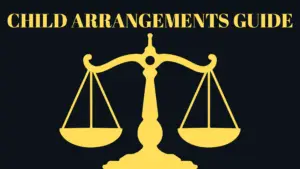Introduction to the Welfare Checklist
Embedded within the fabric of family law lies the Welfare Checklist. This is a comprehensive framework that guides courts in determining the best interests of the child.
If you’re currently navigating this process, our Child Arrangements Order support service offers expert preparation and step-by-step guidance for dads in court.
Enshrined within the law, this checklist comprises seven fundamental principles. Each principle has been meticulously crafted to ensure that the child’s welfare remains paramount in all proceedings. From considering the child’s wishes and feelings to evaluating their physical, emotional, and educational needs. The Welfare Checklist serves as a beacon, illuminating the path toward decisions that safeguard the well-being of the child.
In this article, we delve into each of these seven principles. We explore their significance and how they shape the court’s deliberations in matters concerning the upbringing and welfare of the child.
Feeling daunted by the Welfare Checklist? WhatsApp us today and get clear guidance tailored to your case.
Facing Family Law Child Disputes?
Are you considering or in the midst of family law proceedings and need to discuss your case with us? Don’t navigate this challenging process alone. Our experienced team is here to help.
Book your 30-minute free consultation now and let us guide you through the intricacies of your safeguarding letter. Our knowledgeable professionals will provide clarity on its contents, address any concerns you may have, and offer tailored advice to navigate the next steps in your case.
Your children’s welfare is paramount, and understanding the implications of the safeguarding letter is crucial in ensuring their safety and well-being throughout the legal process. Let us support you in advocating for their best interests.
Don’t delay – schedule your consultation today and take the first step towards securing a brighter future for your family.
Understanding the Welfare Checklist is also crucial when preparing for a Section 7 report. These reports often reference checklist criteria to support final recommendations in court.
🧠 Insider Insight: Lach, our founder, is a qualified social worker who used to write Section 7 reports for CAFCASS — the very reports that influence court outcomes. Now he helps dads respond to them. Learn more about Lach’s background.
👉 Learn more about how we can support you or book a free consultation today




